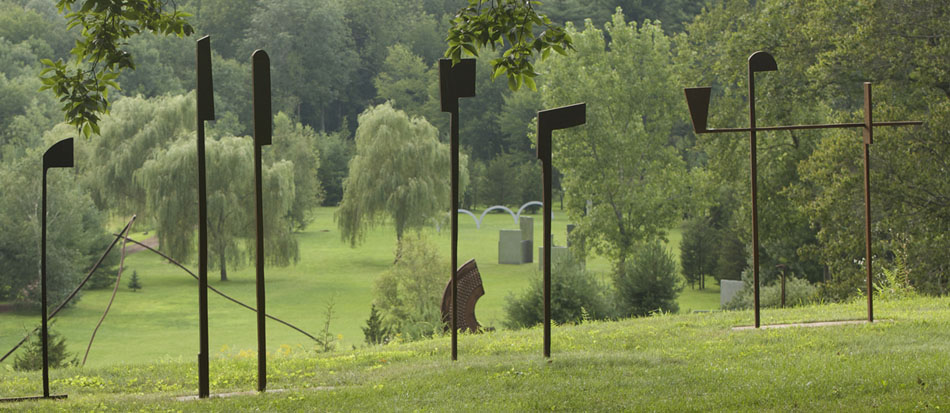|
All 5 books, Edward Tufte paperback $180
All 5 clothbound books, autographed by ET $280
Visual Display of Quantitative Information
Envisioning Information
Visual Explanations
Beautiful Evidence
Seeing With Fresh Eyes
catalog + shopping cart
|
Edward Tufte e-books Immediate download to any computer: Visual and Statistical Thinking $5
The Cognitive Style of Powerpoint $5
Seeing Around + Feynman Diagrams $5
Data Analysis for Politics and Policy $9
catalog + shopping cart
New ET Book
Seeing with Fresh Eyes:
catalog + shopping cart
Meaning, Space, Data, Truth |
Analyzing/Presenting Data/Information All 5 books + 4-hour ET online video course, keyed to the 5 books. |
 |
-- Edward Tufte
As Gertrude Stein lay dying, she was reported as asking:
"What is the answer?"
Her friend was silent.
"In that case, what is the question?" Those were apparently her last words
There is no paradox if there is no answer to no question.
-- Jon Richfield (email)
I have often heard that there are "no wrong questions" -- yet there is an infinite number of wrong answers.
-- Stephen (email)
Molding plane blades
These works remind me of the steel blades of antique wooden molding planes. The blades, when inserted into their matching wooden hand plane, are held fast with a wooden wedge and are used to create various wooden moldings. These moldings can be complex or simple, purely practical or purely decorative, depending on the shape of the blade and the corresponding shape cut into the sole of the plane blade.
The blades themselves are moving and transforming sculptures during their working life. As the planes are used, both the blades and the soles of the planes wear down. Sharper and more delicate features are often preserved by inserting sections of very dense wood (often pearwood or boxwood) into the sole of the plane. Most of these planes bear the patina of repeated use, with the underside worn smooth and the upper surfaces discolored through years of contact with a craftsman's hand. Around those areas of patina, the planes often have a uniform soft brown color, achieved when the plane maker boils the wooden plane block, releasing just enough of the wood's natural tannic acid to create an even, warm tone. The blades, too, show signs of their working life. Each new plane starts out with a profile cut at the end of a sharpened blade to exactly match the profile of the blade. With successive sharpening, the blades often loose their fidelity to the plane soles, evolving into abstractions of the original intent.
The steel used in these blades is also worthy of note. Early examples were made of iron into which carbon was hammered (while the iron was hot) to create a sharpen-able carbon steel end on an iron shank. Later examples were made of "crucible steel" and still later steel made using the bessemer steel process. This steel was tempered to retain strength and the ability to maintain a sharp edge. In the case of these molding plane blades, the hard steel edge was tempered using a lead quenching process, where the hot steel is cooled in a bath of molten lead. This creates an edge with unusual properties: The blades are easily sharpened, but they maintain their sharpened edge for longer periods than steel made with other processes. To maintain durability, the hard, but brittle, steel edge pieces were often fused to softer steel shanks better suited to absorbing the stresses of hand planing. Over time, the sharpened edges develop a fine polished patina of cool white, in contrast to the blackened and often rusty patina of the soft steel shanks.
The various profiles cut into the bases of each plane tell their own stories. Some can be complex forms created to complement the intricate decorative needs of 18th century baroque design. Others are used to cut window mullions or simple rabbit joints. Many were created to complement proportional systems, many of which have largely been lost to time, unless you know the right old person to talk to or the right threadbare book to read.
I have mixed feelings about repurposing these old blades for use in sculpture. They are sculptural and they can certainly ripe for being appreciated for their practical beauty when re-contextualized. However, when retained with their original plane bodies, these are working tools, and they are a joy to use even today. Also, a wooden plane without a blade is more or less permanently orphaned until someone makes a new blade for it. The new blades can't be as good as the old because lead quenching of hot steel is far too toxic for today's sensibilities. The hollow wooden planes are left with little more than their history, starting with the name and location of the plane maker and/or successive plane owners, which are often stamped into the ends of each. Some of these planes are crudely cut at one end. This was done so that early 18th century planes could fit into the compact tool chests of the 19th century. To find a longer plane, with it's patina in tact, is certainly a prize.
-- Marshall (email)
|
||||||||||||||||||||||||||||||||||||||||||||||||||||||||||||||||||||||||||||||||||||||||||

